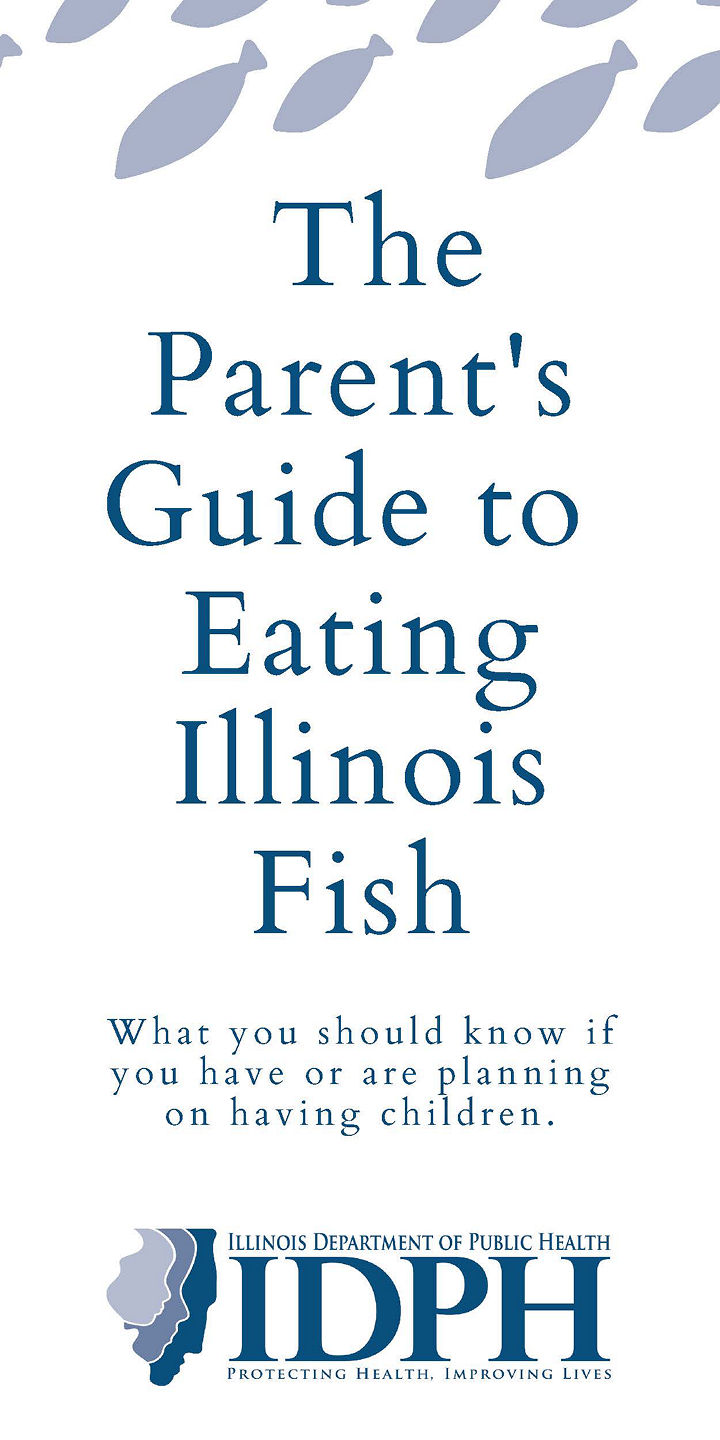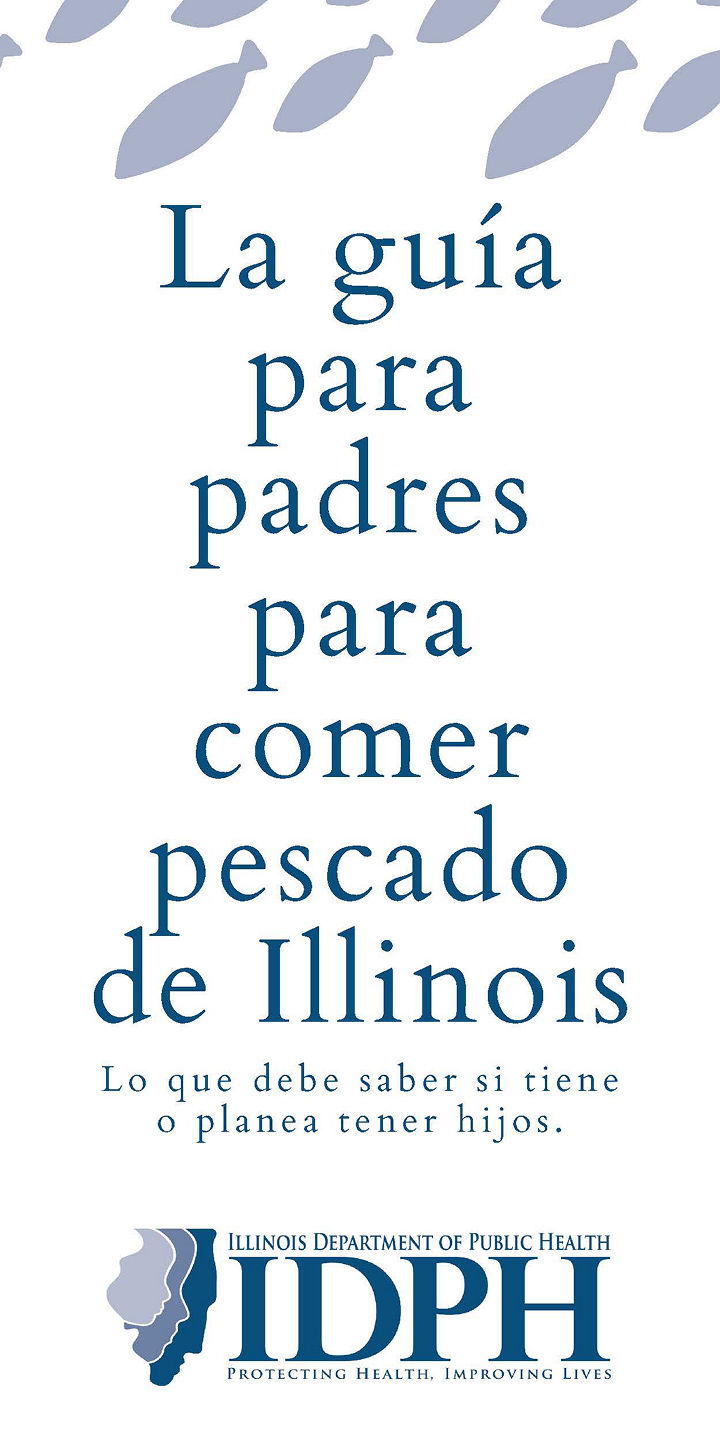Parent's Guide to Eating Fish
Fish are a healthy, low-fat source of protein, but some Illinois fish contain harmful contaminants. This is a special concern if you are pregnant, planning to become pregnant, breastfeeding a baby, or have young children. You cannot tell if a fish is contaminated by looking at, smelling, or tasting it. You also cannot tell if a fish is contaminated by how "clean" the river or lake appears. It is important to know which fish are healthy to eat and how to cook fish to reduce exposure to contamination.
What contaminants are in Illinois fish?
Illinois agencies collect sportfish from lakes, rivers, and streams and analyze tissue for mercury, polychlorinated biphenyls (PCBs), and 13 pesticides, including chlordane.
- Mercury is a metal that mainly comes from coalburning power plants and from household and industrial waste. It causes problems with the nervous system that can lead to learning difficulties.
- PCBs are man-made oils that are no longer used in the U.S. They are known to cause low birth weights and delays in physical development.
- Chlordane is a pesticide that was used for agriculture and termite control prior to 1988. It can affect the nervous system, the digestive system, and the liver.
Mercury, PCBs, and chlordane break down slowly in the environment. They collect in soil, water, and sediments. Fish that live in waters contaminated by these substances can accumulate the contaminants in their bodies. Over time, the amount of contaminants can build up in the fish. When eating the fish, we are exposed to the contamination.
How do I know which fish are contaminated?
The Illinois Department of Public Health (IDPH) develops "fish advisories" for contaminated water bodies. The advisories disclose which fish are safe or unsafe to eat, and how often you can eat them. Due to elevated amounts of mercury, a statewide advisory of one meal per week of predatory fish is in place for those who are pregnant, breastfeeding, or of childbearing age, and children less than 15 years of age.
Additionally, many waters have more restrictive advisories for mercury or other contaminants.
How can exposure to contaminants in fish be reduced?
Avoid older and bigger fish
They have had more time to build up contaminants in their bodies.
Choose fish that do not eat other fish
Bluegill and other panfish are good choices. Walleye and bass tend to have higher levels of mercury because they may eat other contaminated fish.
Avoid fish with a lot of fat
Fatty fish, such as carp and catfish, tend to collect more chlordane and PCBs in their fat.
Steps to take to protect you and your family
The health benefits of eating fish outweigh the risk from exposure to contaminants if you:
- Follow the Illinois fish advisory recommendations
- Choose fish that are less prone to contamination
- Properly prepare the fish to reduce contamination
What are the benefits of eating fish?
Fish are part of a healthy diet and provide several key nutrients throughout pregnancy, breastfeeding, and childhood to support a child’s development, including:
- Omega-3 and omega-6 fats (heart health, brain development, and immune support)
- Iron and zinc (immune support)
- Iodine (skeletal and central nervous system development)
- Choline (spinal cord development)
- Additional nutrients like protein, vitamin B12, vitamin D, and selenium
The U.S. Food and Drug Administration (FDA) recommends children and those who are pregnant or breastfeeding should eat 2-3 servings of low mercury fish per week. Fish such as shark, swordfish, king mackerel, and tilefish contain high mercury and should be avoided. However, most store-bought fish, such as salmon, canned light tuna, tilapia, cod, pollock, and catfish, contain lower mercury and are considered better choices.
Properly clean and cook your fish
There are healthy ways to prepare fish that will help reduce your exposure to PCBs and chlordane. However, mercury accumulates in muscle tissue and cannot be removed from fish. When you cook sportfish, follow this advice:
- Clean the fish and trim away the fatty areas, such as the belly, top of the back, and the dark meat along the side.




- Remove or puncture the skin before cooking to allow the fat to drain off.
- Broil, grill, roast, or steam the fish to allow fat to drain away. If it is a large, fatty type of fish, frying is not recommended.
- When broiling, grilling, or roasting the fish, throw away the fatty drippings. Fat is where most of the chlordane and PCBs are stored. Do not use them to make soup.
Where can I get more information?
Illinois Department of Public Health, Division of Environmental Health, Toxicology
- dph.illinois.gov/fishadvisories
- Call Toxicology at 217.782.5830 or Women's Health at 888.522.1282
- DPH.Tox@illinois.gov
Illinois Department of Natural Resources, Division of Fisheries Resources
- ifishillinois.org
- 217.782.6302



